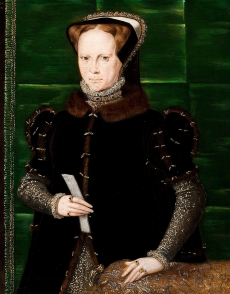
Email: EllaTournes@bexleygs.co.uk
Total Article : 45
About Me:Sixth form student currently studying English Literature, Drama and Theatre Studies, Classical Civilisation and History.

Eamon Duffy, as a revisionist historian, is of the school of thought that lends itself towards a gradualism. He argues that ‘the Protestantizing of England…was never a landslide, but a task achieved with labour and difficulty… it was not secure till the second half of the reign on Elizabeth’. This obviously suggests that the influence of Edward VI was part of a cumulative effort by all of the Tudors – the conversion to Protestantism was only completed by Elizabeth I. The word ‘Protestantizing’ (a neologism) suggests complete Reformation – an idea, which, in my opinion isn’t realistic. The connotation of completeness from ‘Protestantizing’ and ‘secure’ that Duffy is looking at the whole of the English public as a collective. ‘Reformation’, by definition, is change – not complete change, just change. The Reformation of the Church, therefore, cannot be judged by complete change – it can easily be argued that Edward did drastically change English religion, it just took a longer time for the process to be completed.
Christopher Haigh, a more orthodox historian, is of the opinion that the Reform was quick and controversial. He says ‘the death of Henry gave power to Protestants; naturally there was a second, a truly Protestant Reformation’. The words ‘naturally’ and ‘truly’ suggest a obviousness to the impact of Edward VI on religious change. The distinction between the first Reformation under Henry VIII and the newer, ‘truly Protestant Reformation’ shows that Haigh believes Edward to have had more impact. Haigh states that during Edward’s reign, ‘religious change (was) proceeded by spasmodic fits, uncertain starts and threats of reversal’. The words ‘spasmodic’ ‘fits’ and ‘threats’ are all highly plosive – they give an impression of drama and pace to the process of Reformation that is completely opposed by Duffy, who suggests a gradual, even, slow pace.
Compared to Edward VI, Mary I’s religious changes obviously swung towards Catholicism rather than Protestantism, but were extremely dramatic in their own right. The number of people (approximately two hundred and seventy four) executed for heresy between 1555 and 1558 was great than in any other European Catholic state. Mary, however did not believe in executed well educated men, and people she didn’t see as a threat to social stability – a moderate view that was also adopted by Edward in his removal of Catholics from religious office, but lack of persecution for their beliefs. Mary passed a law dictating that anyone caught with Protestant literature would be executed, her ruthlessness earned her the name Bloody Mary. Although Mary I passed a lot of legislation, the significance of the developments that took place are questionable – England returned to Protestantism under Elizabeth I extremely quickly, possibly suggested that Henry and Edward’s cumulative actions towards Reformation were greater than Mary’s.

0 Comment:
Be the first one to comment on this article.